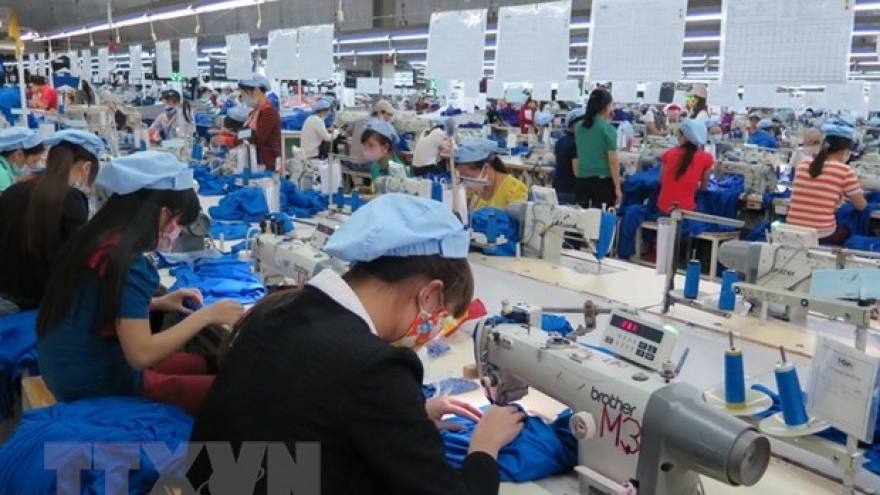Quality key to enhancing garment, textile exports to Japan: experts
Only by developing high quality and excellent designs could Vietnamese garment and textile firms boost their exports to Japan, a market that holds strict standards for imported products, according to the insiders.
 |
| Workers at Duc Giang Garment Joint Stock Company (Photo: VNA) |
As a large trade partner of Vietnam, Japan is expanding imports for a wide range of products originated from the Southeast Asian nation, and garment and textile industry holds huge potential.
The Ministry of Industry and Trade reported export revenue during January-June totaled nearly 18 billion USD, up 8.61 percent from the same time last year. Of the total, shipments to Japan reached 1.89 billion USD, just after the US (over 11.7 billion USD), and the EU (2.56 billion USD).
Chairman of the Vietnam Textile & Apparel Association (VITAS) Vu Duc Giang said Vietnam could sell high-quality shirts, suits, sport wear, kids’ clothing and towels to Japan; however, exporters should be well prepared before entering the market due to its complicated distribution system and high costs of trade promotion.
Despite weak purchasing power in the East Asian country, exports of garments and textile still enjoyed robust growth, and many businesses have won contracts to ship products to the market by the end of this year, including Viet Tien, Nha Be and Garment 10.
According to Than Duc Viet, General Director of Garment 10 Corporation, Japan has been a traditional market of the company for years. The firm has cooperated with leading fashion brands and retailers in the country like Uniqlo and Aeon. Currently, shipments to Japan account for over 12 percent of the company’s total exports.
Viet stressed that improving fashion design capacity and competitive edge is the only ways for Vietnamese exporters to increase added value of garment exports, as well as sustainably increasing export revenue in Japan.
As many Japanese partners have placed orders for small quantity of clothing with original designs and required shipments in a very short time, local firms must have sufficient materials to fulfill the contracts, or else they would lose these high-end customers.
The Vietnam National Garment and Textile Group (Vinatex) said garment and textile have long been among key exports of Vietnam. Thanks to advanced technology and skillful labourers, the goods have better quality, thus winning the favour of many fastidious markets such as the US, the EU and Japan.
Vinatex is gearing towards sustainable development through balancing exports in all markets, and has been paying special attention to Japan that has sound political relations with Vietnam. Besides, Japan was the first market of Vietnamese garment and textile when the country had not joined the World Trade Organisation.
Its member company, Dong Xuan Knitting firm (Doximex), has cooperated with Japanese-based Katakura Industries Co. for 10 years to improve product quality. Katakura expects to work more with Doximex in the production of underwear.


